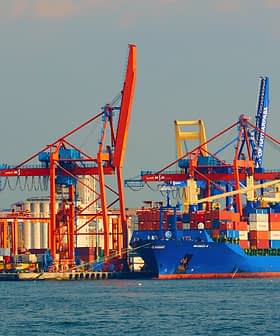EU Olive Oil Exports to Reach Record Levels
The European Commission predicts that high worldwide demand combined with decreased production in non-E.U. countries will result in record E.U. exports for 2018/2019.
 Port of Valencia, the busiest in Spain and fifth busiest in Europe.
Port of Valencia, the busiest in Spain and fifth busiest in Europe.A report by the European Commission predicts that olive oil exports from the European Union (E.U.) will reach record levels for the current 2018/2019 season.
In its April 2019 report, ‘Short-Term Outlook for E.U. Agricultural Markets in 2018 and 2019,’ the European Commission projects that an increase in olive oil production in E.U. countries combined with high worldwide demand and a decline among non‑E.U. producers will result in a record-high E.U. exports. The E.U. is the world’s biggest exporter of olive oil.
More specifically, the report predicts that olive oil production will grow by three percent for 2018/2019, and exports will rise by 11 percent to 625,000 tons, a record high.
See Also:Olive Oil Trade NewsIn 2017/2018, olive oil exports from the E.U. increased by only one percent compared to the previous year. According to provisional figures, 563,400 tons of olive oil were exported from the E.U. in 2017/2018, while for 2018/2019 this figure is estimated to be 573,000 tons.
The E.U. is also the world’s leading olive oil producer, with Spain being its largest producer by far, followed by Italy and Greece. In the period from 2012 to 2017, 67 percent of the world’s olive oil was produced in the E.U. Provisional figures put E.U. production at 2,186,000 tons for 2017/2018 while for 2018/2019 this is estimated to be 2,101,000 tons.
Despite production shortfalls in Italy and Greece – largely due to the harsh weather experienced in these parts of Europe last year, it is thanks to Spain’s good harvest that the E.U.‘s production figures are up. Spain produced 1.7 million tons of olive oil in 2018/2019, which represents the second highest amount since 2003.
The report points out that increased supply will have an effect on prices. In February 2019, the average price of virgin olive oil in the E.U. came to €290 per 100 kg, 17 percent less than the previous year.
The E.U. is also the world’s biggest consumer of olive oil: E.U. citizens consume between 1.5 and 1.6 million tons of olive oil a year.
The European Commission’s report cautions that production is expected to fall for the 2019/2020 campaign due to insufficient rainfall during the first few months of 2019 in Portugal, Spain, the south of France and northern Italy.
The report also shares projections for other agricultural sectors. Compared to olive oil, cereal and sugar production in the E.U. have faired poorly and are still slowly recovering after last year’s spell of bad weather.
The extreme weather patterns experienced in some parts of Europe in late 2018 in the form of abnormal snowfall, high winds, heavy rainfall and flooding have been blamed for the poor olive harvest in Greece and a record low in olive yields in Italy.








